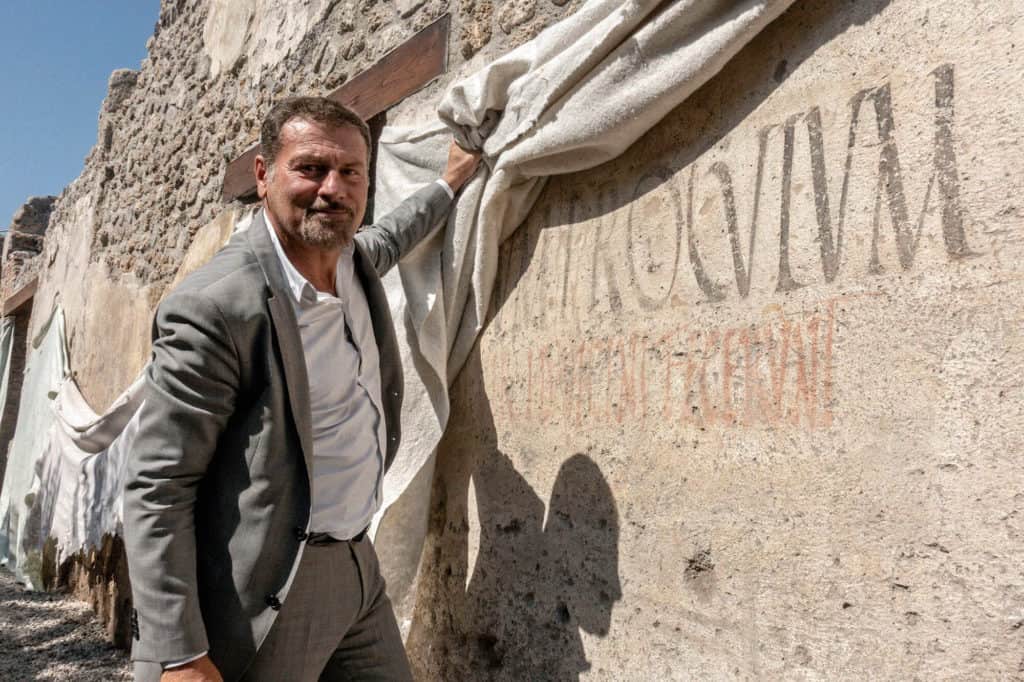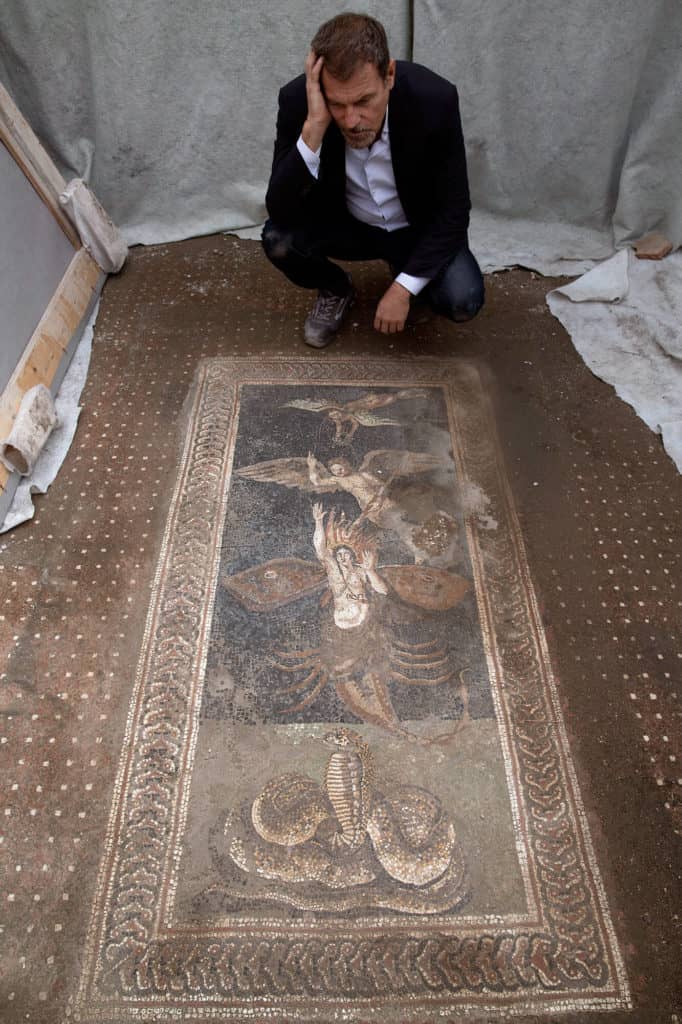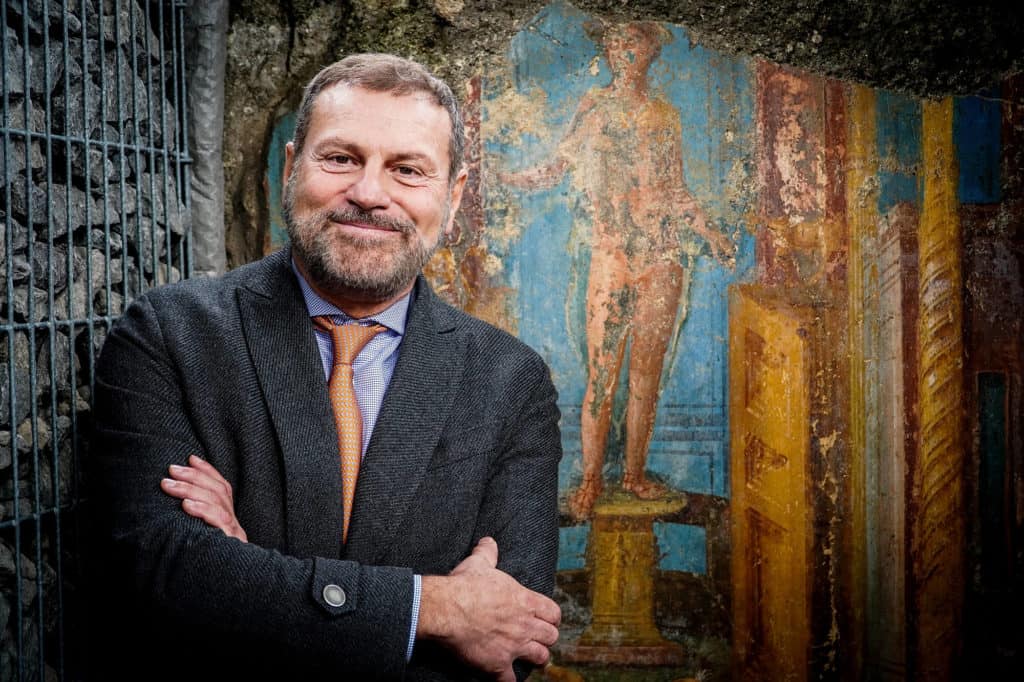Introducing Italian Ministry of Culture’s General Director of Museums
You can’t throw a [figurative] stone without hitting a cultural site in Italy. There are too many. If we were to quickly count up these amazing institutions – museums, monuments, complexes and archaeological sites– the tally is nearly 500 and there is one person leading them all: Massimo Osanna, archaeologist, professor and cultural heritage pioneer.
For the past six years and up until a few weeks ago, Director Osanna was the man behind Pompeii. As Pompeii’s Superintendent, Osanna brought the world’s most visited archaeological site into the 21st century with virtual tours, new excavations, engaging exhibitions and more. Today, Dir. Osanna has taken up a new incarico as the Ministry of Culture’s Director General of state museums – as in the head of every single public museum and site in the country. We’re proud to introduce Direttore Osanna, and a little bit of Pompeii, to you
ISSIMO: Have you always been in love with archaeology?
MASSIMO OSANNA (MO): Archaeology has always been with me since I was a child in elementary school. I was born in a small town called Venosa, in Basilicata. It is a Roman city, the hometown of poet Orazio Flacco (Horace) where there is an archaeological park. I remember going through the archaeological area on bike with my friends, which was not fenced at the time, it was open. And I remember the incredible emotions from that time.

ISSIMO: Did you ever dream you would become the Director of Pompeii? And then the Director of all of Italy’s museums?
MO: No, never. I must really say never, also because in the past I had also been superintendent in Basilicata but basically I had an essentially academic career. I am a professor, a full professor at the Federico II University of Naples so I thought that my life would continue in the university field. So, let’s say, even when the Direction of Pompeii was proposed and proposed to me, it was a huge surprise and I also had a bit of fear because in 2014 Pompeii was in a truly terrible situation and therefore I was not so convinced that it was that my way but I was wrong because obviously it was.
ISSIMO: How much has changed at Pompeii since 2014? What were the biggest challenges?
MO: First of all, Pompeii was a team effort. This is crucial. You cannot face the complex problems of a place like Pompeii without having an interdisciplinary team that includes competent professionals who work with passion. So, for me it was important to create a very solid team and therefore on the one hand architects, archaeologists, engineers, computer scientists, experts in communication and then all branches of archeology, archeozoology, archeobotany, physical anthropology, volcanology. So, it was a strong and dedicated team with a common goal, that of saving Pompeii. And I had the great fortune of working with General Giovanni Nistri, Commander- General of the Carabinieri.
Here in Pompeii the most difficult thing was to secure the whole city in a short time. [The massive excavation site covers 44 hectares]. It means intervening on every structure, on each wall, on each element of the archaeological park so that there were no more collapses, so as not to lose any other archaeological material. Therefore, it was really necessary to intervene quickly, effectively and above all paying attention to the investment of money because here it was necessary to do it well, not wasting money.

ISSIMO: Pompeii is unforgettable, a place considered a Must See to visitors. How do you think the experience and public perception of Pompeii has changed?
MO: In recent years in Pompeii, this new activism has been accompanied by enormous media attention: newspapers, televisions, documentaries. We worked with the spotlight on us and this great media attention meant that the impression really changed progressively. I have actually noticed in the last six years a truly progressive change in the perception of foreigners of Pompeii because before it was the site of the scandal, that is, the demonstration that Italy does not know how to manage and enhance its heritage. Now it has become the model to follow.
ISSIMO: With new hand-drawn footage and antiquarium with retrofitted rooms, you’ve truly recreated the Pompeii lifestyle when previously there was not.
M: Yes, all these aspects were absolutely not considered before but we really understood how important it was to rethink the function of Pompeii, also use all the methodologies and technologies that the contemporary world allows. Pompeii has become very technological- even our excavations have been documented by drones, laser scanning, 3D reconstruction (even geologically) so all of this is really a new approach that Pompeii needed and that in a place like Pompeii you could not fail to do.
All of this documentation has also allowed us to enter the daily life of. But, regardless of this, what was known about Pompeii made us understand that Pompeii was destroyed at a time of great development. It was a time when the ancient cities were far ahead, a sophisticated system of aqueducts, a craftsmanship of the highest level, an incredible Mediterranean connectivity with products that come from all over the Mediterranean. And this makes an almost globalized approach to the Mediterranean even then, this makes all of ancient Pompeii very close to our daily experience which is made up of mobility, connectivity, connections, networks.
ISSIMO: We’re no longer seeing a moment frozen in time….
MO: How they were living. What life was like. Often we, even with new technologies, we are able to reconstruct people’s biographies. For example, DNA analysis on the victims’ bones, you really understand a lot of things: the work they did, the social status, the diet – an understanding of many aspects of this daily life that would otherwise be lost.
ISSIMO: Let’s talk about your new role [as Director General of Italy’s Museums]. Will you be bringing these ideas to other sites?
MO: Absolutely yes. Let’s start for example with the archaeological sites. What must be undertaken is a planned maintenance project for all the archaeological areas, the smallest, the largest. After the major restorations, we in Pompeii put everything into safety, we started a virtuous maintenance program, a real programmed maintenance, which means systematic inspections of the monuments, all of them, analysis and diagnosis of the state of decay, intervention and computerised data storage- a virtuous system that must be exported to all other sites, even those obviously art-historical ones to ensure that there are safe places [for the work] but also places that can be visited. The paintings, the objects in the deposits are dead if they are not seen, they have to be given new life and therefore the deposits must become libraries of objects.
We need to think of sustainable tourism rather than continue to think of places frequented by masses of tourism that often do not enjoy nor learn in the visit. We must also try to push quality tourism by creating an increasingly narrow network of museums, archaeological sites in order to ensure that the smaller realities are visiting while also trying to decongest the larger, like the Colosseum and Pompeii.
ISSIMO: You grew up in Basilicata, you’ve studied and worked in Napoli, Matera, etcetera and traveled all over. We’d love to know what are your favourite places to visit?
MO: Oplontis (Part of the Pompeii network) where this is the luxurious villa of Poppea, Nero’s wife. It is an extraordinary place, frequented by few people but that I would invite everyone to visit because it is truly a place where you understand the luxury of the great villas of the Roman world. And then the huge luxury villas of Castellamare di Stabia with its unique state of conservation of paintings, environments, rooms, colonnades, pedestals.
ISSIMO: And in Napoli?
MO: The first thing you have to do in Napoli is to walk through the alleys of the historic centre because it is one of the most extraordinary examples of urban continuity from ancient times to today. Those streets, which are precisely San Biagio dei Librai, via dei Tribunali (the historic centre), are protected by Unesco among other things, and are the same streets of the 5th century BC Greek city- that is the urban layout, with roads that cross at right angles, a regular grid of streets, North-South, East-West, from the original Greek layout. This is an extraordinary thing, you really understand what a Greek city was like because you walk in the same streets, turn around in the same corners from the 5th century BC city.

Fun fact: In 2018, Lego Classicists honoured Direttore Osanna with his very own figurine for his incredible contributions in archaeology and Pompeii. What started out as a passionate project for Liam D. Jensen, aka The Lego Classicist, an Australian archivist, is an incredible honour for academics, archaeologists, and anyone involved in the ancient world. Lego Classicists celebrates the love and expertise of those individuals who continue to engage us with history. Osanna joins a stellar line up which includes Mary Beard, the creative team and voice actors of Assassin’s Creed, Donna Zuckerberg, Stephen Fry, Michael Turner, Barack Obama and more.
Interview by Erica Firpo.
